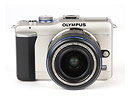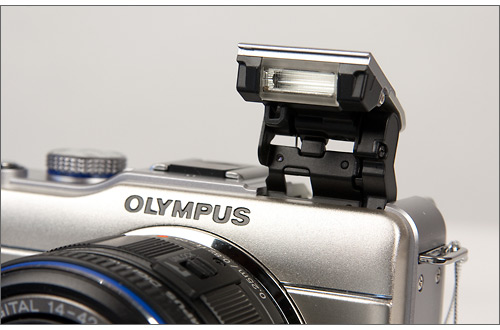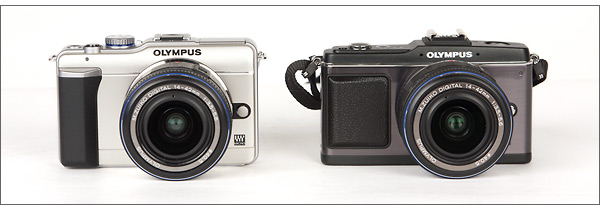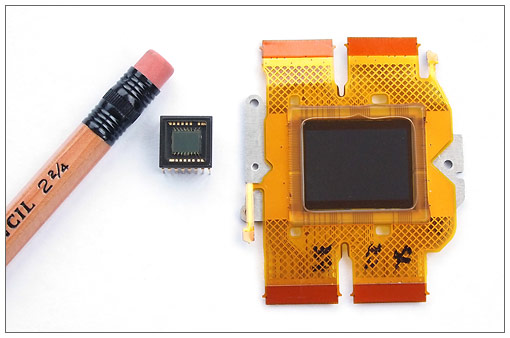 This article was written about a pre-production Olympus E-PL1 I had for a few days before the camera was announced. I picked up a production E-PL1 from Olympus at PMA and I’ve been shooting with it for a few months now, including skiing, mountain biking and a trip to Mazatlan, Mexico. Please continue reading this announcement article because I think it’s a good one. But make sure you also read my full, detailed review of the camera: Olympus E-PL1 Pro Review – The Ultimate Travel Camera.
This article was written about a pre-production Olympus E-PL1 I had for a few days before the camera was announced. I picked up a production E-PL1 from Olympus at PMA and I’ve been shooting with it for a few months now, including skiing, mountain biking and a trip to Mazatlan, Mexico. Please continue reading this announcement article because I think it’s a good one. But make sure you also read my full, detailed review of the camera: Olympus E-PL1 Pro Review – The Ultimate Travel Camera.
I believe the new Olympus E-PL1 Micro Four Thirds camera is going to be huge. It definitely deserves to be. If you’ve been on the fence about Micro Four Thirds, now is the time to jump (learn more about Micro Four Thirds). The first two Olympus Micro Four Thirds cameras, the E-P1 and E-P2, were designed and priced for pros and serious photography enthusiasts. The E-PL1 offers pretty much all the performance of the E-P1 and E-P2 for hundreds less – and it has the pop-up flash the other two cameras lacked. Olympus sent us a pre-production camera to play with. Read on to find out about the new camera and make sure to watch our hands-on EPL-1 preview video.
Olympus E-PL1 Pro Review >>
The Olympus E-PL1 is a high-end consumer camera. It was designed for the photographer who is in the market for an entry-level digital SLR or premium compact camera. But the pros are gonna want one, too. With a 12-megapixel Four Thirds sensor, built-in image stabilization, 720p HD video, and full manual controls as well as Intelligent Auto and the Olympus Art Filters, it’s got a great feature set, just like its predecessors. But honestly, the most compelling feature of the Olympus E-PL1 is the $599 price tag. The only real compromises with the E-PL1 are the build – it’s not made of solid stainless steel like the E-P1 and EP2; and it only records sound in mono in movie mode. It doesn’t come with the EVF electronic viewfinder like the E-P2 – but it does have the Accessory Port if you do want the EVF. And it costs $500 less than the E-P2.

New Olympus E-PL1 Digital Pen Camera Features:
- Built-in pop-up flash
- Dedicated video button
- Live Guide intuitive controls in iAuto mode
- “Gentle Sepia” Art Filter
Like the E-P1 and E-P2, the new E-PL1 includes the iAuto Intelligent Auto “dummy” mode, which automatically chooses the best focus, exposure and in-camera processing. But the E-PL1 adds an intuitive new “Live Guide” user interface to the iAuto mode. The Live Guide uses new symbols to represent camera controls and make it easier for people who don’t know photography jargon or theory to control things like depth-of-field, white balance and exposure. If those last three terms meant nothing to you, then the new Live Guide was created for you! I played with the Live Guide controls a bit and they really do make sense on a very intuitive level.

I’ve been recommending the Micro Four Thirds cameras to anyone considering a high end compact like the Canon PowerShot G11 or the Panasonic Lumix LX3. The Olympus Pen cameras (as well as the Panasonic G1 and GF1) are only a bit larger than the G11 but they offer superior performance, image quality and flexibility. The Micro Four Thirds cameras were a bit of a hard sell when the least expensive model cost $300 more than the G10 or G11, though. With a list price of $599, just $100 more than the G11, the E-PL1 changes that. I think the E-PL1 might also start to take a bite out of the entry-level DSLR market. Everyone who steps up to an entry-level DSLR wants better image quality and performance. But they don’t necessarily want the size, weight, sophistication or cost of an actual digital SLR – especially not a camera that also has HD video. The new Olympus E-PL1 offers almost all of the benefits of a digital SLR without the overhead. Not to mention, the Micro Four Thirds cameras are actually better for HD video because unlike video-enabled DSLRs, they have fully functional auto focus in the movie mode.
 A larger sensor equals better image quality. The Olympus Pen sensor is on the right and a standard compact digital camera sensor is on the left. |
The new Olympus E-PL1 Micro Four Thirds camera will be available in March of 2010. As I said earlier, the list price is $599. That buys you a Black, Champagne Gold or Slate Blue camera body, the M. Zuiko Digital 14-42mm f/3.5-5.6 kit lens, battery, charger manuals, software, cables, etc. The only other things you’ll need are a fast SDHC memory card and a cute little case for your new camera.
Olympus E-PL1 Pro Review – The Ultimate Travel Camera >>
Olympus E-PL1 Hands-On Preview Video >>
Olympus E-PL1 Press Release >>
Related Content:
All Olympus User Reviews
All Digital SLR Reviews
Olympus Cameras & Four Thirds Forum
Digital SLRs Forum
Olympus Digital Cameras Web Site
next page – Olympus E-PL1 Press Release >>



Pingback: » Support Blading @ Olympus – Your Story | Rollernews.com